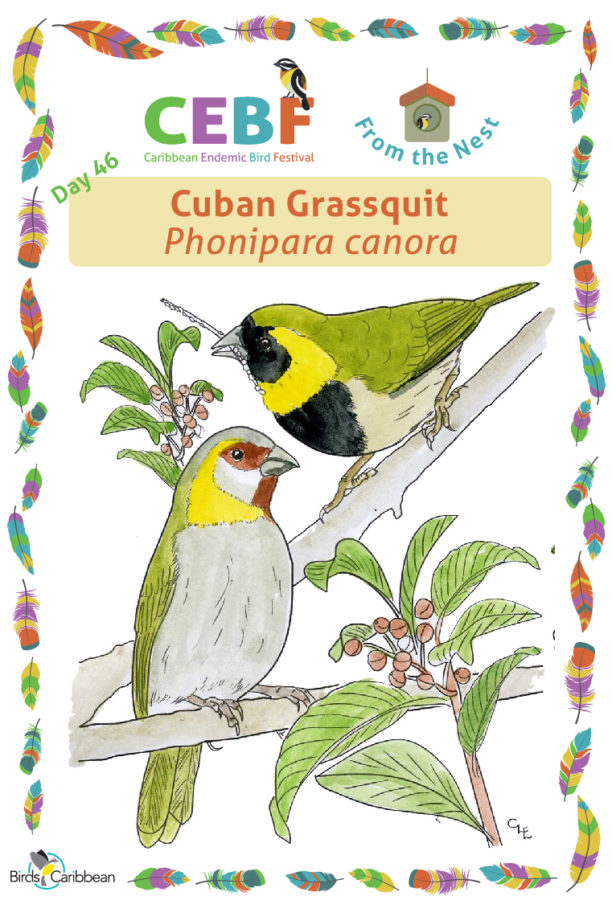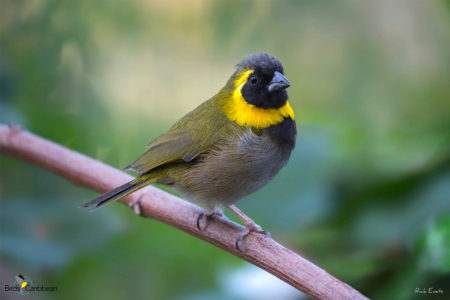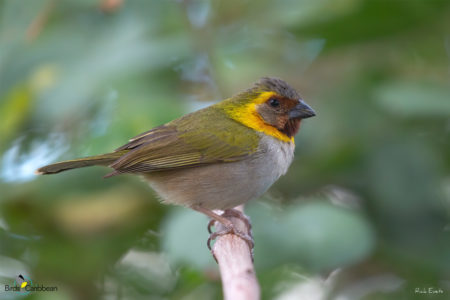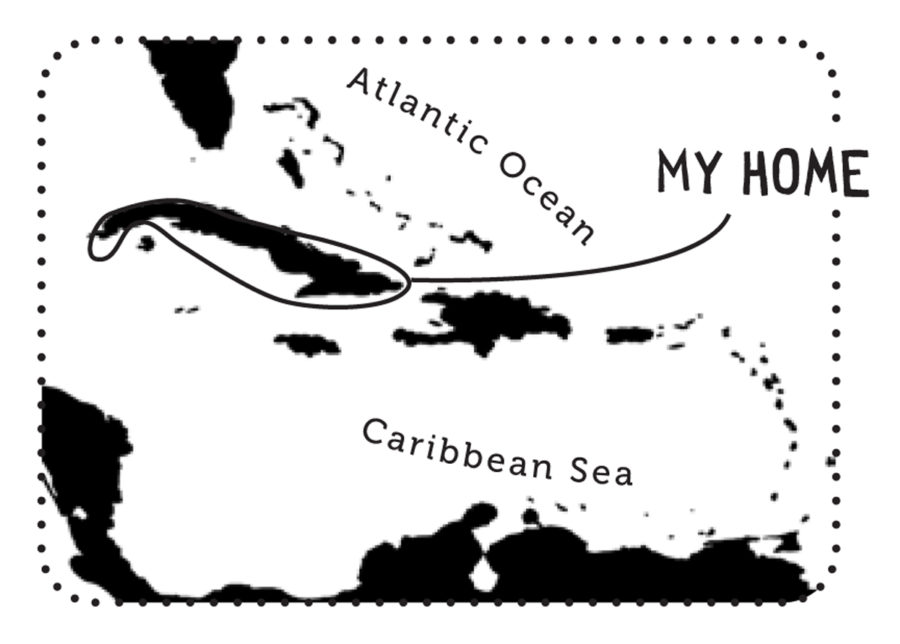Celebrate the Caribbean Endemic Bird Festival (CEBF) with us in our virtual “From the Nest” edition! Have fun learning about a new endemic bird every day. We have colouring pages, puzzles, activities, and more. Download for free and enjoy nature with your family at home.

Endemic Bird of the Day: Cuban Grassquit
The Cuban Grassquit, called Tomeguin del Pinar in Cuba, is a very small (11.5 cm) seed-eating bird with a conical bill. The male has a black face ringed with a bright yellow collar. He is olive green above and grayish below with a black patch on the breast. The female is similar but duller with a chestnut and gray face and no black breast patch.
The Cuban Grassquit is endemic to Cuba and widespread across the island in coastal scrub, woodlands, pine forests, and thickets near cultivated fields. Because of their bright colors and beautiful song, many people want to keep these birds as pets. Sadly, this has led to a tremendous decline in numbers of this species due to illegal trapping for the caged bird trade, including much international trade. In areas where they were abundant 20 years ago, they have completely disappeared. Conservation partners in Cuba are working on education campaigns to discourage trapping and keeping these birds as pets. Loss of habitat from deforestation is also a problem.
During the non-breeding season, Cuban Grassquits are usually in flocks with Yellow-faced Grassquits, feeding on seeds, small fruits, and plant shoots. In the breeding season, from March to October, flocks divide into pairs. The nest is a large globular mass of woven dried grass built near the ground, with a side entrance. Females lay 2-3 eggs that are white with brown spots. Both parents feed the nestlings.
The Cuban Grassquit is also found on the island of New Providence, in the Bahamas, where it was introduced in 1963. An airplane carrying a cage of Cuban Grassquits from Cuba to Europe landed in Nassau with mechanical problems. Before the plan could continue on its route, the birds were beginning to die so the cage was opened to release the birds. Cuban Grassquits are now common on New Providence. Because they are non-migratory they have not spread to other islands. Learn more about this species, including its range, photos, and calls here.
Colour in the Cuban Grassquit!
Download the page from Endemic Birds of the West Indies Colouring Book. Use the drawing above or photo below as your guide, or you can look up pictures of the bird online or in a bird field guide if you have one. Share your coloured-in page with us by posting it online and tagging us @BirdsCaribbean #CEBFfromthenest
Listen to the song of the Cuban Grassquit
The Cuban Grassquit‘s song is a shrill tsit-tsit-tilloi, or chiri wichiwichi, chiri wichiwichi, chibiri wichi wichi. Pairs also sing in duet as courtship and against territorial rivals. The call is a soft chip or high tsit, often repeated.
Puzzle of the Day
Click on the image below to do the puzzle. You can make the puzzle as easy or as hard as you like – for example, 6, 8, or 12 pieces for young children, all the way up to 1,024 pieces for those that are up for a challenge!


Activity of the Day
FOR KIDS & ADULTS: Enjoy the videos of a Cuban Grassquit below. The first two videos show a male and female perched on a branch in Cuba by Cuban bird guide and author of the Birds of Cuba, Arturo Kirkconnell. The third video shows lovely close-up footage of a male foraging for seeds on the ground.

